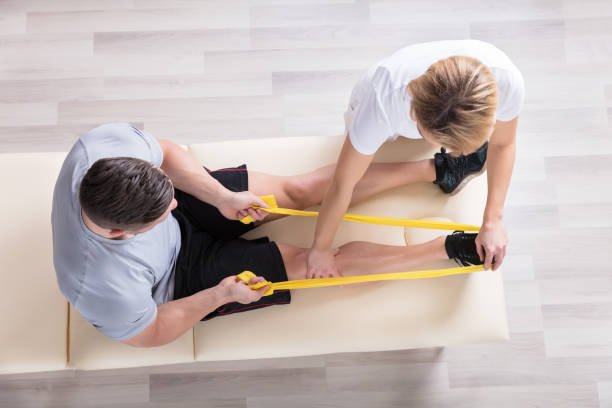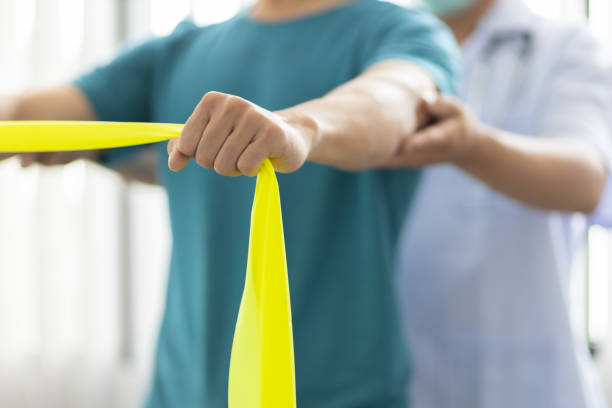Men of all ages and occupations can benefit from the care of a physical therapist. A physical therapist can help improve movement, eliminate pain, and reduce injury.
A men’s health physical therapist can treat pelvic floor dysfunction and related issues, including bladder and bowel control problems and chronic pelvic pain syndromes. They can also address vertigo and balance issues.

1. Back Pain
Men are often reluctant to discuss their pain and health issues. However, a nagging backache or suspicious mole could be a sign of something serious that requires prompt medical attention. Regular health checks can help identify problems early and lead to more successful outcomes.
Men can reduce their risk of back pain by avoiding heavy lifting, sleeping on a soft mattress or smoking (which has been shown to accentuate back pain). A strong core is also essential. Performing low-impact exercises, like swimming and Pilates, can help strengthen the muscles that support the spine.
Some alternative treatments, such as chiropractic care and acupuncture, may ease back pain. Acupuncture involves inserting thin, sterilized needles into specific points on the body. However, there is no substantial evidence that these treatments improve outcomes when added to other standard medical treatment.
A Men’s Health Physiotherapist is a physical therapist who has a special interest and further training in the male pelvic floor, including erection dysfunction, incontinence and urinary frequency and urgency. Men of all ages, occupations and lifestyles can benefit from this specialist area of physiotherapy.
2. Neck Pain
Men and women can experience neck pain from poor posture, sleeping in the wrong position or overuse. Neck pain can result in limited range of motion or even a numb sensation. Physio Ngunnawal can reduce the symptoms of this condition and help you return to your normal daily activities.
The neck supports the head and consists of 7 bones (vertebrae) stacked on top of each other that are linked by facet joints and bound together by ligaments and muscles. Neck pain can be caused by a variety of problems including stiff muscles, a slipped or herniated cervical disc and arthritis in the spine.
Your therapist will teach you a series of exercises to improve the movement and strength of your neck and upper back. This may include yoga, tai chi or Pilates, which can reduce stiffness and increase your range of motion. Exercise is proven to be the best treatment for neck pain, so your therapist will guide you in maintaining an active lifestyle. This will help you to get back to your activities as quickly as possible.

3. Knee Pain
Men’s knee pain is often caused by general wear and tear, playing sports that involve a lot of jumping or pivoting and the impact on your joints from carrying excess weight. Other reasons can include tight muscles and ligaments, poor shoe fit, starting high-impact fitness routines without warming up or structural knee problems such as arthritis or torn cartilage.
Physio clinic in Canberra are able to help with the prevention and treatment of common knee injuries such as sprained or strained ligaments and muscles or tears of cartilage around your knee joint. They are also able to treat structural issues such as arthritis, chondromalacia and osteoporosis.
They are also trained in treating common men’s pelvic pain issues including incontinence, overactive bladder and bowel dysfunction as well as erectile or sexual dysfunction. They are able to refer you to Urologist or Men’s Sexual Health specialists as required. They are also able to treat men with Vertigo or Balance issues using vestibular rehabilitation therapy. This includes gaze stabilization exercises and habituation exercises to reduce dizziness.
4. Shoulder Pain
In a healthy shoulder, the joints move freely and are cushioned by bursae (fluid sacs) that help lubricate the joint. However, with repeated overhead activities—such as lifting or reaching above your head or playing sports—over time, it’s easy to damage tendons, ligaments, and blood vessels in the area.
Most often, shoulder pain develops from overuse and irritates the group of muscles and tendons called the rotator cuff. This can lead to a condition called impingement, which causes pain in the shoulder when the tendons are compressed within the joint.
A physical therapist can teach you exercises to stretch and strengthen the shoulder. They can also teach you proper lifting techniques so you don’t injure yourself again. You can also learn to use ice and heat therapy, which help control pain and inflammation.
Leaving shoulder injuries untreated will likely make the problem worse. If you experience sudden shoulder pain, see a doctor right away. This could be a sign of a serious injury like a torn rotator cuff or dislocated shoulder.
5. Hip Pain
Hip pain can result from overuse of the muscles in the hips, or from conditions like rheumatoid arthritis and osteoarthritis, where the cartilage that cushions bones in the hip joint wears away. The hips can also be damaged by impact injuries like a sports injury or a fall, or by problems with the labrum (a disc-shaped cartilage that helps hold the hip in place).
Swelling in the area of the pain suggests an infection in the joint and is cause for immediate medical attention. If a numbing injection of the hip joint provides complete pain relief, it can confirm that the painful hip is the source of the problem.
Ice packs are helpful for reducing inflammation and pain. Warm showers and cold compresses can also offer some comfort, especially when used intermittently. Non-steroidal anti-inflammatory medications (NSAIDs) are effective for reducing pain, as are analgesics. For patients with serious hip inflammation, corticosteroid injections can reduce swelling and help heal the injured tissue. Platelet-rich plasma (PRP) injections may be useful for stimulating healing and decreasing inflammation.




